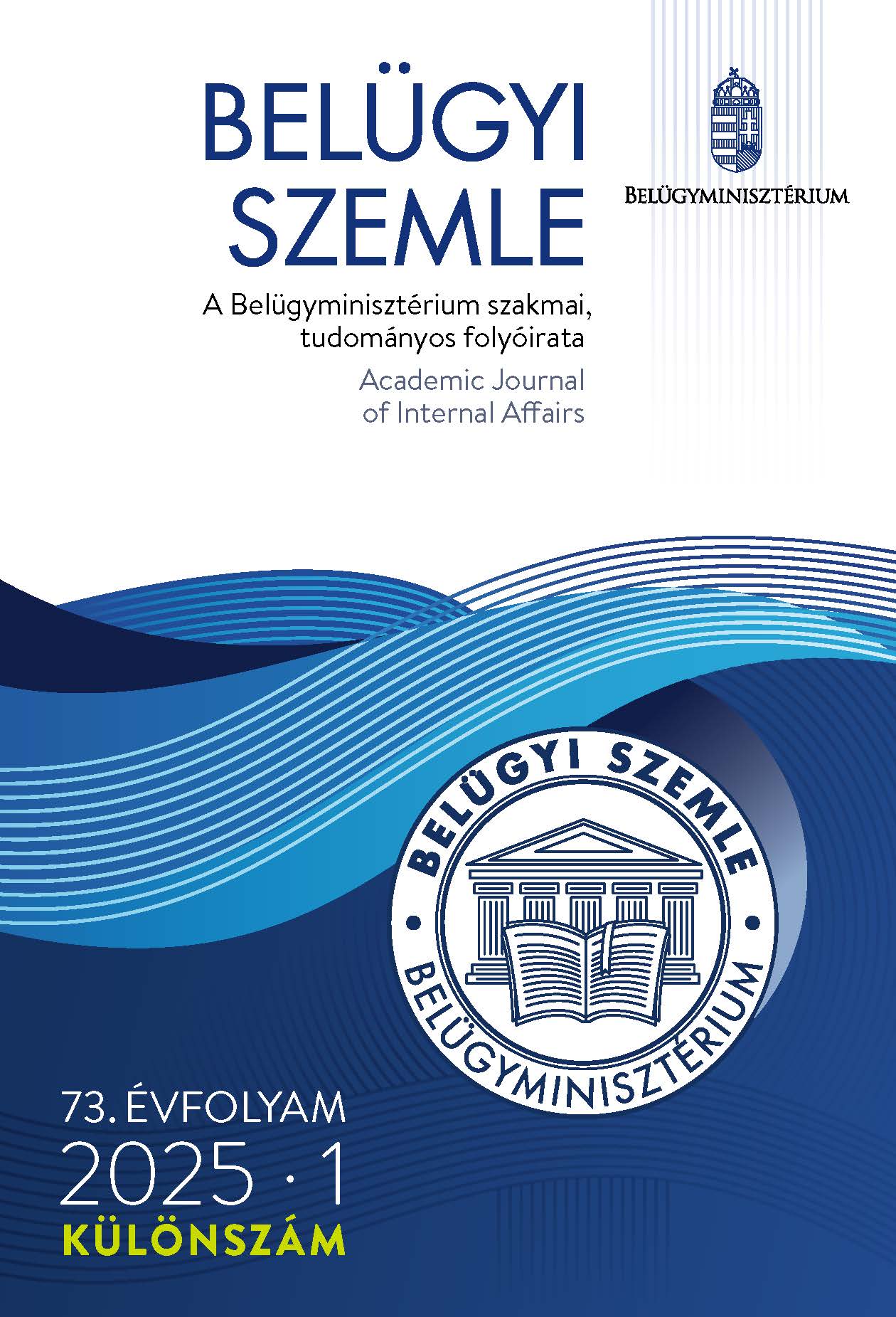Abstract
Aim: This research investigated the feasibility of introducing restorative justice offender-victim mediation in the Hungarian penitentiary system. The examination covered the theoretical and practical readiness of the personnel in charge of executing the procedure, as well as the organizational feasibility conditions at the system-wide level. It also analyzed and evaluated the impact on the system.
Methodology: A two-phase empirical research was applied. During the first phase, probation officers received training in conducting mediation. During the second phase of the research, offender-victim mediations were carried out by trained staff members.
Findings: The research has shown that probation officers in the prison system are capable of independently identifying and implementing offender-victim mediation cases. It is possible to integrate this restorative justice process into the existing system with minimal organizational modifications. The research has already revealed noticeable positive feedback from prisoners, the court, and the prosecution.
Value: In the course of the project, one third of the probation officers conducting the mediation process received theoretical and practical training. Observations were made regarding the changes required for the sustainable implementation of a systemic approach. The implementation of the reparation procedure will result in a substantial decrease in the occurrence of recurrent offenses.
References
Barabás A. T., Fellegi B. & Windt Sz. (Szerk.) (2010). Kézikönyv a mediáció és helyreállító igazságszolgáltatás alkalmazhatóságáról a büntetés-végrehajtásban. Foresee Kutatócsoport – Országos Kriminológiai Intézet. https://www.foresee.hu/uploads/tx_abdownloads/files/Konfliktuskezeles_HUN.pdf
Baruch, R. A. & Folger, J. P. B. (2005). The promise of mediation: The transformative approach to conflict. Jossey-Bass.
Beer, J. E. & Packard, C. C. (2012). The mediator’s handbook (4th ed.). New Society Publishers.
Breckenridge, C. C. (2018). Violent offenders and their victims: Restorative justice through mediation. Lexington Books.
Deák F. (2010). Ajánló. Börtönügyi Szemle, 20(4), pp. 120–124. https://epa.oszk.hu/02700/02705/00084/pdf/EPA02705_bortonugyi_szemle_2010_4.pdf
Fellegi B. (2009, október 13.). Mentálhigiénés intervenciós módszerek a deviáns életút megelőzésében – A helyreállító igazságszolgáltatás. https://www.foresee.hu/uploads/tx_abdownloads/files/Fellegi_eloadas_SOTE_2009okt_01.pdf
Hansen, T. & Umbreit, M. (2018). Four decades of victim-offender mediation research and practice: The evidence. Conflict Resolution Quarterly, 36(1), pp. 1–15. https://doi.org/10.1002/crq.21234
Héthy E. (2012). A büntetőjogi mediáció gyakorlati aspektusai. Debreceni Jogi Műhely, 9(1), pp. 1–14. https://doi.org/10.24169/djm/2012/1/1
Johnstone, J. K. (2009). Restorative justice: How it works by M. Liebman. The Howard Journal of Criminal Justice, 48(2), pp. 223–226. https://doi.org/10.1111/j.1468-2311.2009.00562_2.x
Kim, W. C. & Mauborgne, R. (2003). Fair process: Managing in the knowledge economy. In L. Prusak & E. Matson (Eds.), Knowledge management and organizational learning: A reader (pp. 243–258). Oxford University Press. https://doi.org/10.1093/oso/9780199291793.003.0016
Kiss A. (2005). Elvárások az EU-ban – Gondolatok a mediációról. Ügyészek Lapja, 12(1), pp. 75–82.
Klerman, D. & Klerman, L. (2015). Inside the caucus: An empirical analysis of mediation from within. Journal of Empirical Legal Studies, 12(4), pp. 686–715. https://doi.org/10.1111/jels.12089
MacLean, P. D. (1990). The triune brain in evolution: Role in paleocerebral functions. Springer. https://doi.org/10.1007/978-1-4899-6776-3
Marshall, T. F. (1999). Restorative justice: An overview. Home Office. https://www.antoniocasella.eu/restorative/Marshall_1999-b.pdf
McCold, P. & Wachtel, T. (2003). In Pursuit of Paradigm: A Theory of Restorative Justice. https://www.iirp.edu/images/pdf/paradigm.pdf
McCold, P. (2001). Primary restorative justice practices. In A. Morris & G. Maxwell (Eds.), Restorative justice for juveniles (pp. 41–58). Hart Publishing. https://doi.org/10.5040/9781472559111.ch-003
Moore, C. W. (2014). The mediation process: Practical strategies for resolving conflict (4th ed.). Jossey-Bass.
Navarro, J. & Poynter, T. S. (2010). Louder than words: Take your career from average to exceptional with the hidden power of nonverbal intelligence. HarperCollins.
Németh V. & Szabó C. (2021). Közösségi mediációk hatása a gyakorlatban, két önkormányzati esettanulmány elemzésén keresztül. Belügyi Szemle, 69(6. különszám), pp. 73–88. https://doi.org/10.38146/BSZ.SPEC.2021.6.5
Németh V. (2020). A közelség végtelen: A mediáció mint problémamegoldó a PTC tükrében. GlobeEdit International.
Németh V. (2021). Magyarországi szervezeti participációs döntéshozatali jó gyakorlatok az integritásmenedzsment területén. Belügyi Szemle, 69(3), pp. 447–468. https://doi.org/10.38146/BSZ.2021.3.6
Németh V. (2022). A mediáció szabályozásának története. Belügyi Szemle, 70(12), pp. 2631–2643. https://doi.org/10.38146/BSZ.2022.12.5
Németh, V. & Klotz, P. (2020, szeptember 16.). Hand in hand? Organizational participation decision and integrity development based on the lessons of two case studies [Konferencia-előadás]. KÖFOP-2.2.3 Projektzáró Konferencia, Budapest. https://doi.org/10.13140/RG.2.2.11623.93605
Shapland, J., Robinson, G. & Sorsby, A. (2011). Restorative justice in practice: Evaluating what works for victims and offenders. Willan. https://doi.org/10.4324/9780203806104
United Nations. (2006). Handbook on restorative justice programmes. United Nations. https://www.unodc.org/pdf/criminal_justice/Handbook_on_Restorative_Justice_Programmes.pdf
Wachtel, B., O'Connell, T. & Wachtel, T. (2010). Restorative justice conferencing: Real justice & the conferencing handbook. International Institute for Restorative Practices.
Zehr, H. (2002). The little book of restorative justice. Good Books.
Zehr, H. (2005). Changing lenses: A new focus for crime and justice. Herald Press.

This work is licensed under a Creative Commons Attribution-NonCommercial-NoDerivatives 4.0 International License.
Copyright (c) 2025 Academic Journal of Internal Affairs
